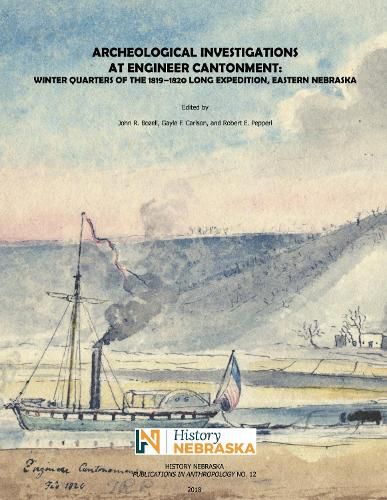Readings Newsletter
Become a Readings Member to make your shopping experience even easier.
Sign in or sign up for free!
You’re not far away from qualifying for FREE standard shipping within Australia
You’ve qualified for FREE standard shipping within Australia
The cart is loading…






From October of 1819 until June of 1820 members of the Stephen Long Scientific Expedition from Pittsburgh to the Rocky Mountains spent their time along the Missouri River in eastern Nebraska at quarters they called Engineer Cantonment. During the stay the party built log structures, held councils with resident tribes, and collected detailed information on the plants, animals, geology, and Indigenous inhabitants. Expedition narratives and a rich collection of artwork have captured the occupation. The Long Party’s efforts produced America’s first biodiversity study and also resulted in collection of some of the earliest systematic ethnographic information about central Great Plains Native American life. The location of Engineer Cantonment was unknown until 2003, when a History Nebraska archeological team discovered the site near Omaha through analysis of expedition artwork, ground-penetrating radar, and narrow mechanical trenching. An archeological exploration uncovered buried ruins such as building wall lines, fireplaces, pits, posts, and thousands of artifacts. It is the only Great Plains site with well-preserved archeological deposits that can be directly and specifically associated with a major expedition. This book is an account of the Long Expedition’s stay at Engineer Cantonment and its archeological discovery and exploration.
$9.00 standard shipping within Australia
FREE standard shipping within Australia for orders over $100.00
Express & International shipping calculated at checkout
From October of 1819 until June of 1820 members of the Stephen Long Scientific Expedition from Pittsburgh to the Rocky Mountains spent their time along the Missouri River in eastern Nebraska at quarters they called Engineer Cantonment. During the stay the party built log structures, held councils with resident tribes, and collected detailed information on the plants, animals, geology, and Indigenous inhabitants. Expedition narratives and a rich collection of artwork have captured the occupation. The Long Party’s efforts produced America’s first biodiversity study and also resulted in collection of some of the earliest systematic ethnographic information about central Great Plains Native American life. The location of Engineer Cantonment was unknown until 2003, when a History Nebraska archeological team discovered the site near Omaha through analysis of expedition artwork, ground-penetrating radar, and narrow mechanical trenching. An archeological exploration uncovered buried ruins such as building wall lines, fireplaces, pits, posts, and thousands of artifacts. It is the only Great Plains site with well-preserved archeological deposits that can be directly and specifically associated with a major expedition. This book is an account of the Long Expedition’s stay at Engineer Cantonment and its archeological discovery and exploration.